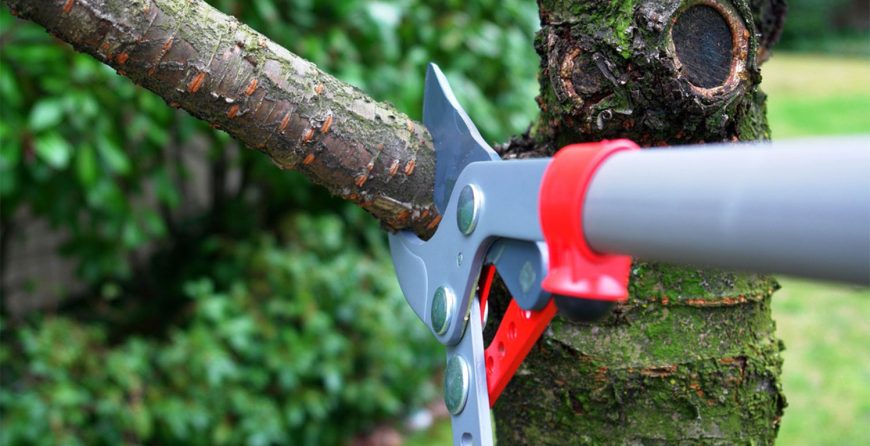Principles of pruning fruit trees
Hamid Larijani, faculty member of Islamic Azad University, Varamin Branch
- Content of this article
- Introduction
- Pruning forms
- Conclusion
Introduction
Although gardeners have been trained to prune trees over the years, it is realistic to say that proper pruning is not yet common enough. Trees need to be trained, that is, to create a body with enough foliage that is properly produced in terms of quantity and quality. Pruning is the cutting of various organs of a plant, including branches, roots, leaves, flowers and fruits.
Some of the purposes of pruning are; Creating a balance between different organs of the plant, eliminating terminal dominance and activating lateral buds, removing pest, diseased and dry branches, allowing machines to move in the garden and increasing spraying efficiency, easy picking of fruits, preventing premature aging of the tree and beautifying the space Greens and parks (such as boxwood and cypress). Therefore, according to the purpose of pruning and plant variety, there are different forms for pruning. Types of pruning in terms of time are:
- Winter pruning; this pruning is done when the trees are in a state of stagnation or so-called dormancy (i.e. late autumn to late winter). At this time, due to the lack of leaves, pruning is easier and less sensitive, and it is possible to cut dry and diseased branches. Winter is also a good time to prune the roots.
- Summer pruning; which is done in summer and during plant activity and is known as green pruning. Green pruning is done to remove extra cuttings, stems and extra flowers and fruits.
Pruning forms:
Jami pruning. The most common form of pruning is for stone fruit trees such as peaches, nectarines, cherries, apricots and plums. This form does not have a central scout and the vertical distance of the main branches (3-5 branches) on the trunk is about 10-15 cm. The advantage of this form is that the central part of the canopy of the tree is open and as a result, sufficient light penetrates into it.
Turnip pruning. This type of pruning is similar to the cup form in terms of removing the main axis. And more suitable for fine-grained fruit trees such as apples and pears. In this method, after planting the seedlings at the end of the first year (winter), the main trunk is cut at a distance of about 120 cm from the ground (in windy areas up to 60 cm). The next year, the seedlings produce a number of sub-branches, some of which are removed in winter, resulting from the growth of a few high buds and have a closed angle and vertical growth, and from the rest, 2 to 5 branches that have a near-vertical angle with the trunk. They are located on the four sides of the main trunk and have a vertical distance of 20-30 cm with each other and are chosen as the main branches of the future tree.
In this case, the tree has strong branches in all its aspects, and the branches can produce a large crop and easily withstand the weight of the fruit as well as external pressures (such as wind). Mild pruning is usually done from the third to the fifth or sixth year. From the sixth year onwards, pruning should be done every year or every other year in the form of thinning and shortening.
Pyramidal pruning: In this form of pruning, which is often used for non-productive pruning, the central branch is not cut and the tree is allowed to grow naturally. Pruning is limited to removing the extra branches and cutting the lower branches to the desired height.
Scaffold pruning: In this method, the trees are trained so that they do not have more than two dimensions. In these shapes, the trees are dwarfed by grafting on truncated stems, and their branches are twisted by string guards (consisting of 3 to 5 strands of wire that run horizontally parallel to each other at intervals of about 50 cm on the wall and Or thick metal or wooden scaffolding is installed) are maintained.
Conclusion:
What branches should be deleted? Stems, stumps, diseased and pest-infested branches. Branches parallel and close to each other are weaker and inward. The branches that are inclined towards the ground should be cut from the place of the arch. Fruitful branches should also be avoided, which are basically short, uneven and have several buds at a short distance from each other and a large compound bud at the end. By marking weak, sparse branches or small and poor quality fruit, the work can be made easier during pruning.
Also, when cutting the branches from the bottom, care should be taken that this is done from the point of connection of the branch to the trunk and no heel or appendage remains. Do not forget that to prevent the penetration of pests and diseases, the cutting site should be completely covered with garden glue. Also note that excessive pruning increases the vegetative growth of the tree and delays its fertilization.


